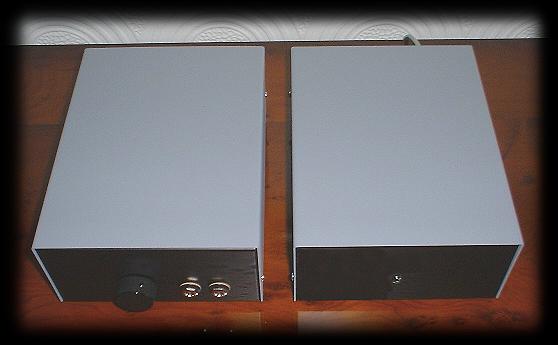
The following is intended as a general reference to the proper setup and operation of the Chiarra amp. Every single audio amplifier will benefit from these simple steps, some of which are actually free and very effective. A little attention and work can go a very long way as far as your system's performance is concerned.

Even though the Chiarra will perform well straight away there is still considerable operational time needed for the unit to perform at its best. For enhanced sonic performance, I highly recommend you leave your unit on at all times until break-in is complete. The length of the break-in period is highly variable and dependent upon many factors. There are specially-designed CDs, such as Reference Recording's Test and Burn-In CD (RX1000) or the Sheffield and Purist Audio Designs PAD burn-in CD's that contain special tracks that help with break-in... These CD's are very good but I, personally, don't like the idea of my CD player churning away for hours on end and prefer to connect the amp to my tuner fed on a diet of radio 2 material.
As a general rule, most equipment requires several hundred hours of
playing to fully break-in. There are several factors that determine the
extensive length of "break-in", such as charging of capacitors,
establishing the electron flow on the PC board, cables, soldering joints,
etc. External conditions, such as the power quality and stability of your
power in your listening room, the kind of music you are listening to (more
or less dynamics), and many more factors will contribute to the break-in
process. It is important to note, that the more a given electronic unit
has been played, the smaller the audible differences get.
Within the break-in process, I distinguish the
four distinct phases of performance I experienced with the Chiarra:
First Period:
After turning on your amplifier for the first time, the unit will require
a few minutes to stabilize. The sound will be rather harsh on the higher
frequencies, and the dynamic range is rather restricted. This sonic signature
will always be apparent when you turn on "cold" components.
Second Period: This stage
will be reached after approximately 1-2 hours of playing time. The dynamics,
soundstaging, focus, and transients will improve noticeably. Essentially,
your unit will start "opening up and relaxing."
Third Period: After approximately 8 - 10 days of playing and being charged, the upper midrange and highs will "smoothen out". The bass will improve in speed and articulation with less overhang. The result is more even and natural tone balance.
Fourth Period: After about 5 weeks + of operation when left on continuously, your unit should be very close to being fully broken in. The sound and performance has progressively improved and your unit will perform to it's full sonic potential.
Even after the initial break-in period, the internal components lose
their charge each time the unit is turned off. The full re-charging can
take hours (and sometimes days!). Therefore, the best sonic performance
is achieved when the components are kept fully charged at all times. This
essentially means leaving your equipment on at all times--if you are comfortable
with that arrangement. If not, at least be aware that it will take some
time for your unit to warm up and fully charge each time you power up.
These charged-based performance issues are applicable to most electronic
equipment, and are especially critical in solid-state gear such as the
Chiarra.
To realize ultimate performance of your Chiarra, fine-tuned adjustments
or "tweaking" should be considered. This can involve everything
from simply setting up the equipment properly to replacing certain components
with "better sounding" alternatives. The greatest improvement
to the sound quality can be obtained by replacing the Operational amplifier
( op amp test )and
removing the balance control. I'll get round to incorporating a "tweaks"
section after evaluating which tweaks bring about the best results in
the Chiarra.

